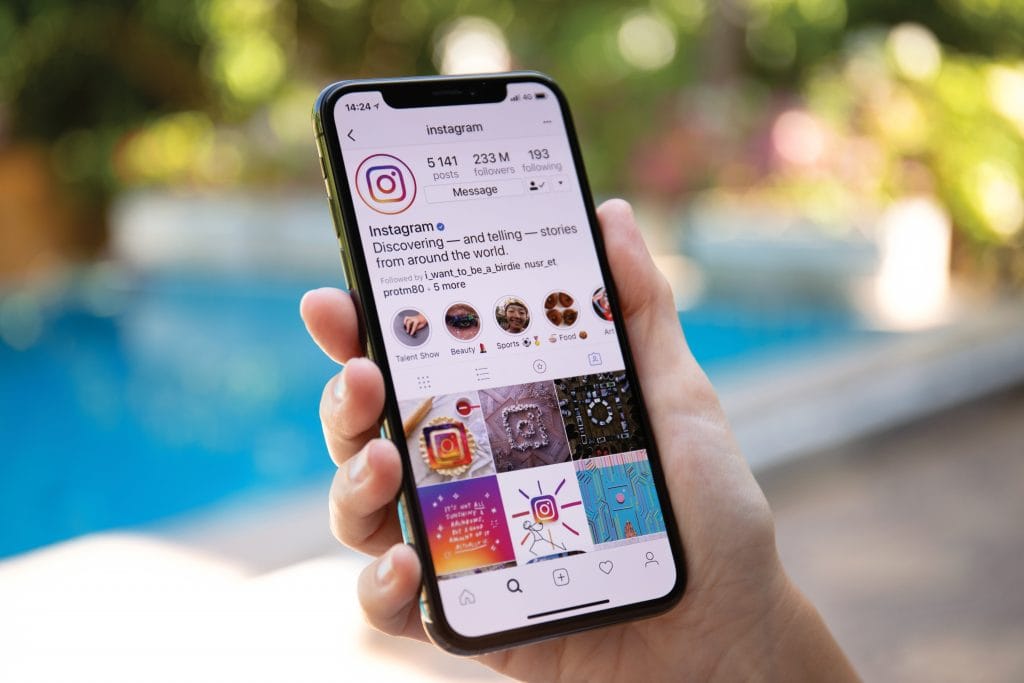To use social media for small business effectively, a small business owner should understand the limitations of the platforms and know how to use each to their strengths.
For example, focusing on a sales-oriented approach on social platforms will not get you far. However, if you use social media to generate meaningful dialogue, provide support, and add value to customers, prospects, and leads, you can achieve great results on social media from a marketing perspective.
Business owners wearing many, or even all of the hats in the organization often dismiss social media as a non-essential chore for which they don’t have time. In today’s digitally connected world, ignoring social media can be a costly mistake.
Potential customers all possess smartphones, an internet-enabled device increasingly used more for social media and web browsing than it is for making phone calls. The small device is also the first item many people use to research new business.
If your small business doesn’t have a presence on the web or social media, then you are not where your customers expect you to be.
When your brand relies on creating personal connections and building strong ties with your customers, then social media offers an opportunity to make your organisation more accessible.
In short, social media will help increase brand awareness, build trust, create a loyal following of loyal customers, and attract new leads into your marketing channels.
Use this guide to learn more about how you can use each social media platform to post the right kind of content at the right frequency and use best practices on each channel.
Facebook Social Media for Business
It seems like Facebook is in the headlines every other day for some misdeed or other, but that hasn’t done much to damage its popularity.
Facebook pages can still work in your favour on the platform and can be used to deliver announcements, news, product showcases, how-to videos, and surveys to your audience.
Learn about your demographic and what information they would like to see by trying out different content and tracking results. When you see favourable numbers on engagement, comments, and shares, focus on sharing more of that same type of content.
Posting Frequency
There is no enforced limit on how often a business can post on Facebook, but once or twice a day will ensure you have a presence in your follower’s news feeds. Post too often, and you risk annoying and losing more followers than you attract. In a study by Socialbakers, engagement rates per post dropped significantly for businesses posting more than twice per day and for businesses posting only once per week.
How to Increase Engagement
People are on Facebook for entertainment, so don’t take your posting too seriously. Try to inject a bit of fun and personality, but always provide value.
People will follow your business for a reason, so make sure you give them plenty of content relevant to your brand and industry.
Instagram Social Media Marketing
Using Instagram in your social media marketing plan requires a more visual approach than the other platforms. While images can increase engagement on all social media platforms, creating interesting, captivating visuals on Instagram is the key to more engagement.
Instagram Stories are an excellent vehicle for showcasing the human behind-the-scenes side of your business. You can also use polls and surveys to get the lay of the land.
Stories that make good use of sound to evoke emotions can increase engagement.
Businesses also get good results by using text to accompany images when making announcements, adding countdowns for special deals, and location tagging to make your business easy to find.
Posting Frequency
Instagram social media for small business requires consistency and quality to get traction. If you start off by posting many times every week and then suddenly drop off, your hard-won user base will quickly unfollow.
Most successful brands on Instagram are posting several times a day. However, how often you post will depend on the type of industry you are in and how much material you have.
How to Increase Engagement
Instagram is all about visuals, so only post high-quality images. Use well-lit, high-quality pictures of your products, premises, equipment, and staff. Great photos are a fantastic way to imply the value you can offer to your audience.

LinkedIn Social Media Marketing
LinkedIn is often referred to as the professional’s Facebook, so your content should aspire to those ideals.
Professionals connect with professionals on LinkedIn, so you won’t see any baby photos or cat videos on LinkedIn. Your followers will be looking for any expertise you can bring to the table that will help them add value and grow their business.
Posting Frequency
Social media for business on LinkedIn requires a more professional touch. A professional post usually takes more time to prepare, but once a week is recommended. Research shows that businesses posting at least weekly on LinkedIn receive two times the engagement over irregular posters.
How to Increase Engagement
Create helpful, professional posts that deliver value to other professionals. Use your experience as your source for the posts, as this is the sort of information your followers will not find anywhere else.
YouTube Social Media Marketing
People are on YouTube for a specific purpose, which could be learning something new, being entertained, or watching a how-to video. Statistics show that a YouTube user will prefer to watch a video showing them how to use a product rather than read the instruction book.
Whether you have a physical product or have created useful software, there’s a good chance your audience will head to YouTube to learn how to use it or put it together.
Posting Frequency
Unlike most other social media for business platforms, creating a video will take significantly more time than the average Facebook post. Your posting frequency will likely be as many videos as you can put out in the time you have available, but make sure you focus on quality rather than quantity.
How to Increase Engagement
YouTube is a search engine, so keyword research and optimizing your content around them is critical to getting found. Use tagging, attention-grabbing titles, and eye-catching thumbnails to draw your audience in.
Twitter Social Media Marketing
Businesses successfully used Twitter for social media marketing even with a 140-character limit, but it’s even easier since the limit was raised to 280 characters in 2017.
Twitter users are there for timely information and up-to-the-minute news, so it can work well for product releases, sales, promotions, and new developments in your industry. A large portion of your demographic is using Twitter to be entertained, so you don’t have to be serious all the time.
Posting Frequency
Twitter feeds are typically busier than feeds on other social media sites, so it’s easy for your posts to get lost in the noise. There are almost 6,000 tweets posted every second, so feel free to post often and give your business a better chance at featuring in a follower’s newsfeed.
How to Increase Engagement
Delivering value via a laugh, usable information, or a good deal is the key to success when using social media for business on Twitter. Images and short videos are more often shared than text-only Tweets.
Does your social media for business presence need some work, or do you need to get started but don’t know how?
You can learn all the necessary skills from skilled professionals who know what it takes to build a successful social media profile on all the big platforms. Check out NZIE’s Social Media Strategy Micro-Credential Today. Learn at your own pace, at a schedule that suits you, and in the comfort of your own home.


